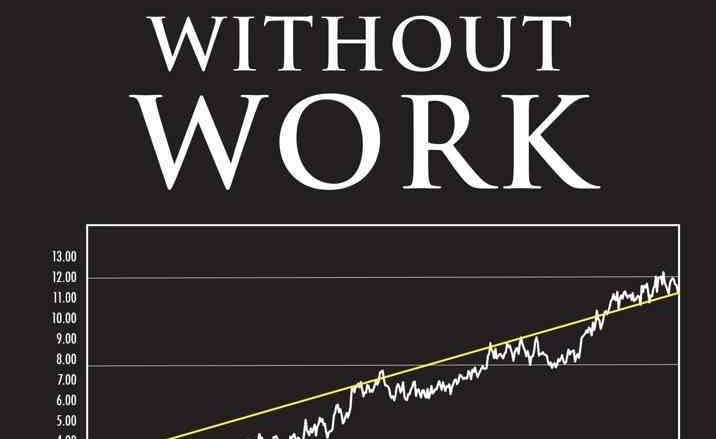We Need a ‘Take Your Son to Work Day’
By Robert Bradley | April 3, 2017, 13:48 EDT

In 1993, Gloria Steinem and the Ms. Foundation for Women launched an event which was called “Take Our Daughters to Work Day.” It was founded in order to expand the career horizons of young women. And its effect has been dramatic. In fact, the results were so explosive that within a short period, more women were attending college and university than men. In 2003, the name of the annual event was changed to Take Our Daughters and Sons to Work Day. But with the decline of men in the workplace, it is clear that we need an annual event named “Take Our Sons to Work Day.”
The astonishing absence of men in the U.S. workplace is the subject of a new book, Men Without Work, by Nicholas Eberstadt. In this short but compelling work, Eberstadt, who holds the Henry Wendt Chair in Political Economy at the American Enterprise Institute, documents that in 2015 nearly 22 percent of U.S. men between the ages of twenty and sixty-five were not engaged in work of any kind. The work rate for this group was nearly 12.5 percentage points below its 1948 level. Even more remarkable in a country where industriousness has always been prized as a virtue, a monthly average of nearly one in six prime-age men (ages 25 to 54) in 2015 had no paying job of any kind. In the 1960s, approximately 6 percent of prime-age men were not at work; currently more than 16 percent have no paid work in any given month. And even more worrisome is the fact that most of these men are not even looking for work.
The statistics show that ten million prime-age men in America are existing without employment. What is even more amazing is that the general public and our political elites have accepted this behavior without comment or criticism.
In this shocking study, Eberstadt describes how there are now three categories of employment for men: employed; unemployed and looking for work; and neither employed nor looking for work. Fifty years ago, this third category was unthinkable in America. The wonderful 2005 movie Cinderella Man chronicles how heavyweight boxing champion James Braddock was so humiliated when he needed to go on the dole during the Great Depression in the 1930s to help support his family, that as soon as he had won prize money in the boxing ring, he returned to the relief office and paid back all the money he had been given by the U.S. government. Shame about living on the dole used to be engrained in our culture. Not anymore!
Who are these ten million prime-age men who do not work and do not seek work? According to Men Without Work, the data show that they are often those without a high school diploma, unmarried, without children or with children living elsewhere, and not foreign born. These men are not house husbands; in fact, they are not generally caregivers at all. They primarily take care of themselves. They rarely attend church. Their self-reported drug use is much higher than working men’s.
How do they exist? Disability benefits, which skyrocketed during the Obama administration, are a major source of income for prime-age men who neither have a job nor are looking for one. Ten million Americans currently receive benefits of $132 billion under this program. By 2013, according to Eberstadt, 57 percent of prime-age un-working men lived in homes reporting disability benefits. In fact, 63 percent of homes with un-working men reportedly received means-tested benefits from the U.S government — such as food stamps, housing, and Medicaid. In short, nonworking men are supported by the U.S. taxpayer, as well as by working women and relatives.
Towards the end of his work, Eberstadt poses the question of what would America look like if there were 10 million more men working. What would it mean for the economy? Would it help the disastrous breakdown of the family in our country? Would it help correct the alleged income inequality gap? Would there be greater engagement in community affairs? And his implicit answer is that America would be a much healthier and more productive society with these men gainfully employed.
In his concluding chapter, Eberstadt asks how do we reverse the collapse of work for the U.S. male? We are facing a grave social ill. The death of work can be enormously detrimental for most people. Work is redemptive, in that being paid for the production of goods or the delivery of services gives most people a sense of dignity and worth. The lack of gainful employment can often bring a loss of self-esteem and respect from others as well as the loss of fulfillment. But clearly, there are no easy answers in a culture which no longer shames nonworking men.
But Eberstadt has at least identified this staggering problem in Men Without Work. His book is a must-read for anyone who cares about the trajectory of our culture. He has brought this invisible crisis out of the shadows into the light. Now our public policy officials and politicians need to develop prescriptions to deal with this challenge, in the same way that after years of debate our welfare system was successfully reformed in a bi-partisan manner during the Clinton administration. But the answer is not only passing laws and changing regulations. It is cultural, too. It involves curtailing the war on boys and elevating the value and dignity of work for all of our citizens in this land. Take your son to work on the appointed day next year.










